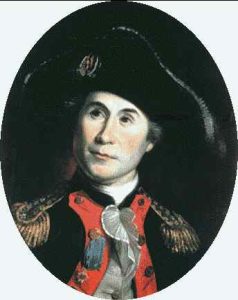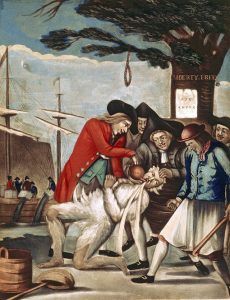Contents
Contents
The Sons of Liberty was an underground Patriot political organization that formed in the Thirteen Colonies in the lead-up to the American Revolution.
From 1765 until the start of the war, the Sons of Liberty led resistance efforts against British acts of oppression, most notably the Stamp Act and Tea Act.
Who were the Sons of Liberty?
In 1765, the British government passed the Stamp Act in the Thirteen Colonies. In response, a group of Patriot businessmen in Boston, Massachusetts, formed a political organization called the Loyal Nine.
The Loyal Nine organized protests and other forms of resistance against the new taxes. But quickly, discontent became more widespread, and the group grew beyond its original nine members, and became more radical as it expanded.
By August 1765, the group had evolved to the point where it had significantly outgrown the initial scale of the Loyal Nine. Later that year, group communications began being signed off with the moniker “the Sons of Liberty”.
The name originates from a February 1765 speech by Isaac Barré, a politician of Irish heritage, in the British House of Commons. During a debate on the Stamp Act, Barré, in support of the colonists, advocated for colonial independence, and described Patriots who resisted British overreach as “sons of liberty”.
The underground group was made up of Patriot men living in Boston from all walks of life, including dock workers, soldiers, merchants, tavern owners, and political leaders. The group was run in secret, and membership was loosely defined – many ordinary people contributed what they could, when they could, to the cause.
By November 1765, the organization had spread, with chapters opening in New York and Connecticut. By the late 1760s, chapters had sprung up in most of the other Thirteen Colonies.
Notable members of the Sons of Liberty included John Hancock, Paul Revere, James Otis Jr., and Samuel Adams, who is often credited as the organization’s founder.
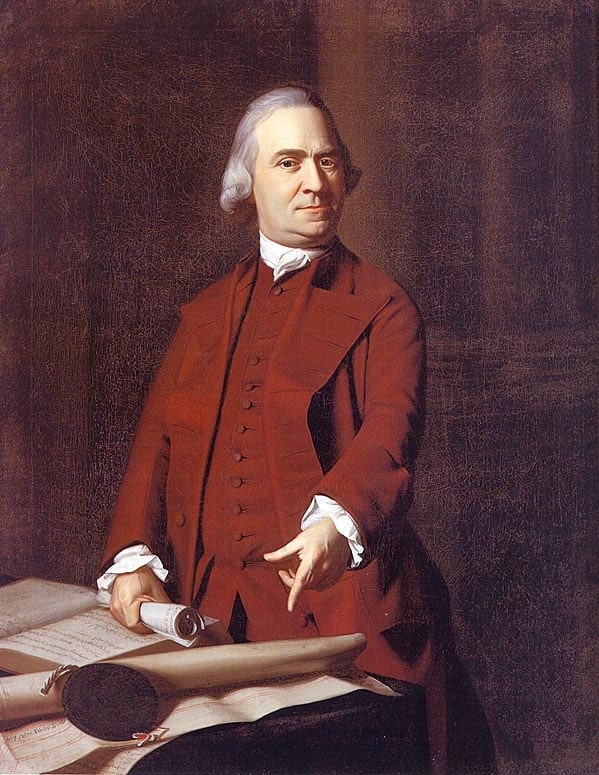
What did the Sons of Liberty do?
The original goal of the Sons of Liberty was to organize resistance against the British Stamp Act, passed in March 1765.
To achieve this, the group organized public protests and demonstrations, and rebelled against British officials responsible for implementing the new rules.
On August 14, 1765, the Sons of Liberty organized the hanging of an effigy of Andrew Oliver – the British customs official responsible for administering the Stamp Act in Massachusetts. The effigy was paraded around Boston, riling up the locals, to the point where the British were unable to control the mob. The effigy was later decapitated and burned.
Later that night, Oliver’s house was broken into and his office burned down. On August 17, he resigned his position, and soon after, Sons of Liberty members raided the house of Thomas Hutchinson, Lieutenant Governor of Massachusetts, continuing their violent defiance of the Stamp Act.
The Sons of Liberty also played a political role in the lead-up to war, promoting slogans such as “No taxation without representation” to raise support for the Patriot cause.
They also helped to organize boycotts of British goods, to put financial pressure on the British government to repeal the taxes they had implemented.
After the Boston Massacre of March 5, 1770, Paul Revere published an engraving depicting British Redcoats as murderers, who had lined up and opened fire on a defenseless crowd of civilians. In reality, the truth was that the shots were a panicked response to the crowd’s actions – throwing stones and advancing on the soldiers.
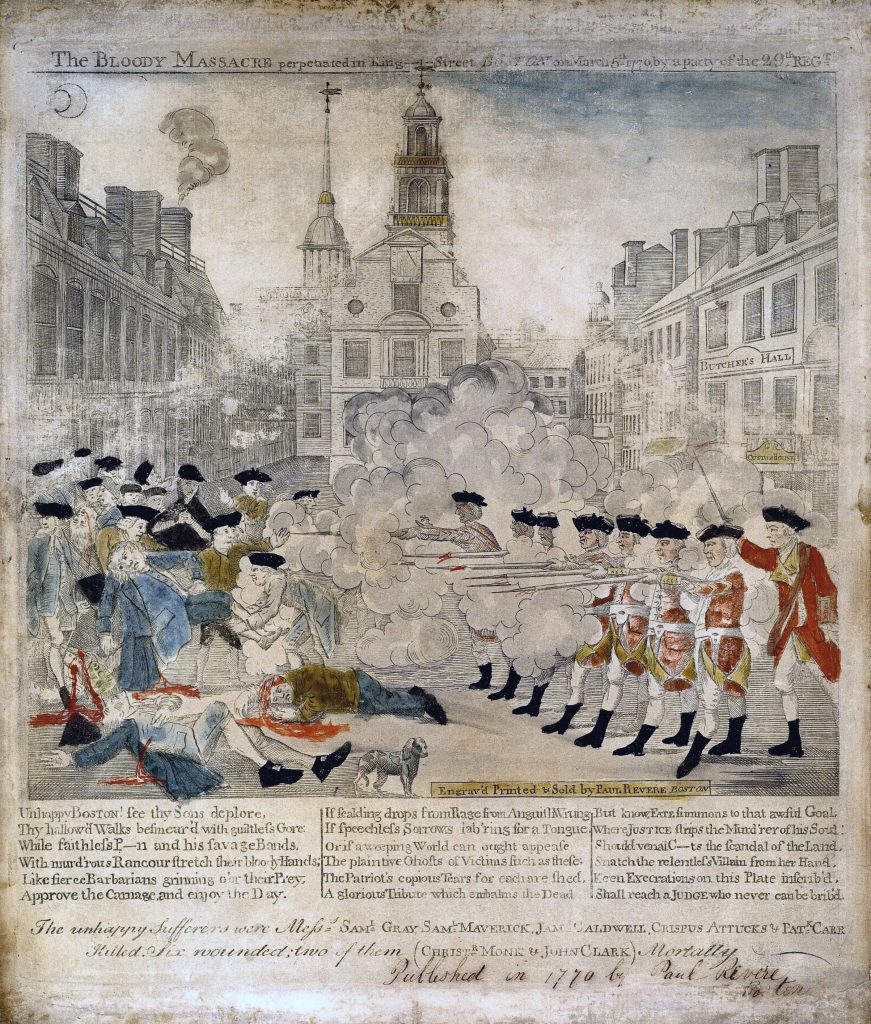
The Sons of Liberty used political pamphlets to spread this cartoon among the colonists, further turning public sentiment against the British.
But the Sons of Liberty’s biggest contribution to American history came on December 16, 1773, during an event that became known as the Boston Tea Party.
After the British implemented the Tea Act in the colonies earlier that year, Sons of Liberty members disguised as Native Americans boarded British East India Company ships docked in Boston Harbor, and dumped 342 chests of tea into the ocean.
Four weeks later, a mob incited by the Sons of Liberty tarred and feathered John Malcolm, another Loyalist customs officer, before taking him to the Liberty Tree in Boston and forcing him to drink tea.
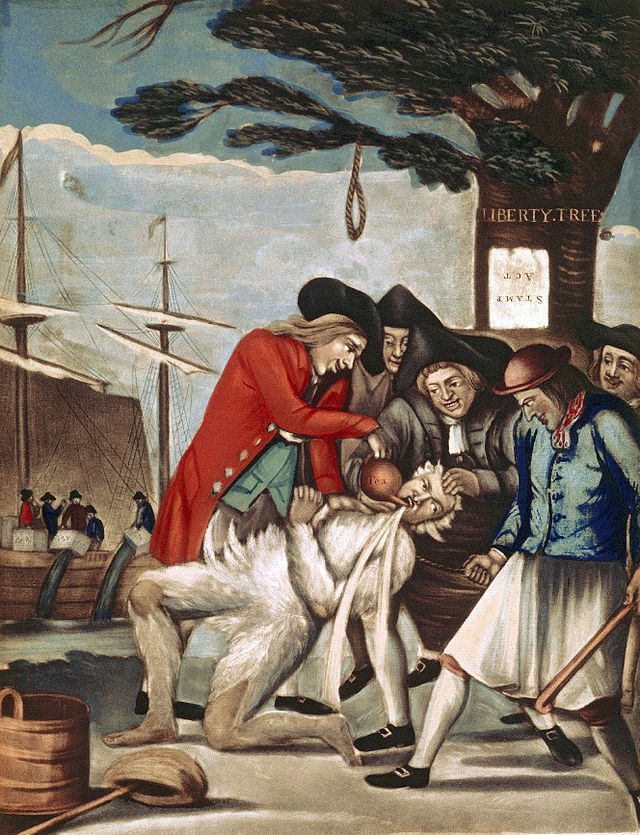
During the Revolutionary War, the Sons of Liberty effectively merged into the broader resistance movement, as Patriots focused their efforts on forming the military forces needed to resist the British Army.
Its members continued to raise support for the Revolutionary cause, producing propaganda, spying on the British, and fighting in the Continental Army.
Interesting facts
- The Sons of Liberty held meetings and organized public gatherings under the Liberty Tree, a large elm tree in Boston Common, and a common meeting point for Patriots at the time. The tree was cut down by Loyalists in August 1775.
- Early on, the Sons of Liberty were sometimes referred to as the “Liberty Boys”.
- The Sons of Liberty had their own flag, called the Rebellious Stripes. Beginning in around August 1767, the flag began to be used to signal group meetings, attracting the attention of those around Boston Common. A flagpole was erected near the Liberty Tree in that year for this purpose.
- The Sons of Liberty were also responsible for the Burning of the Gaspee in 1772 – a lesser-known act of Patriot resistance, in which a British customs ship was set alight off the coast of Rhode Island.


